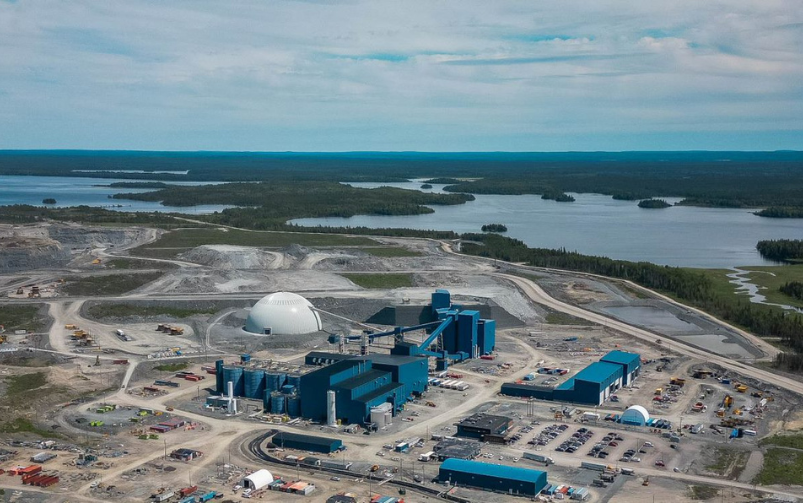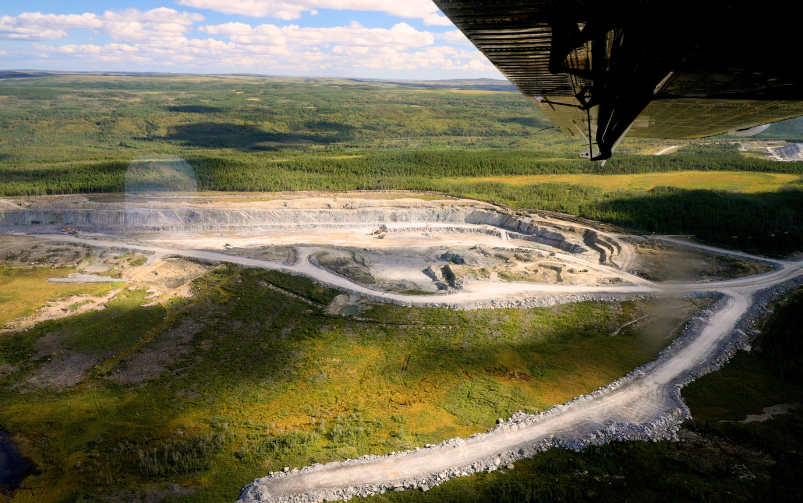New technology from NSS Canada utilizes augmented reality to speed up surveying underground. Courtesy of NSS Canada.
NSS Canada, a Sudbury, Ontario-based mining technology company, has incorporated an augmented reality (AR) display into its underground surveying software.
Its proprietary Miner Operated Survey System (MOSS) integrates mine design specifications and drawings, and supplies data in real time, so that users can complete markups of the mine face underground and create a blasting plan. The technology has been on the market since 2017, with clients that include Vale Base Metals, Glencore, Newmont and Pan American Silver.
NSS Canada has spent the last two years developing MOSS AR and demonstrated the technology at the Mining Transformed exhibition, which took place from May 27-29, at the NORCAT Underground Centre in Sudbury. The company announced that it has moved into the pilot stage for MOSS AR and is currently looking for mining companies to test it at their underground operations.
Kaitlynn Zygmont, sales and marketing director for NSS Canada, told CIM Magazine in an interview that the new technology provides real-time holographic projections of all survey and planned data, and significantly reduces the amount of equipment, and time, required to conduct surveying underground.
The MOSS AR set-up includes a hard hat that is outfitted with Microsoft’s HoloLens 2, a tablet that connects to the HoloLens via Bluetooth, and two printed QR codes that utilize existing survey control points; this configuration replaces the total station, tripod and prisms that were previously required to get the job done. Zygmont said that MOSS AR can mark up the underground area in three to five minutes, compared to about 20 minutes using MOSS without AR.
“This is something that allows the users to move faster underground,” she said. “In addition to that, it eliminates your interaction with the face. Obviously, miners want to [limit] their interactions with the face as much as possible, because that’s where rockfalls happen, and there’s potential for injury. You’re able to stay three to five metres away from the face with MOSS AR. And you’re not needing to do any physical markup with the face at all anymore, because everything’s just done with hand gestures and with the augmented reality display.”
How it works is the blasted face profile is captured by the HoloLens 2, creating a digital twin of the drift. The data is then exported in real time to the tablet, where the miner can calculate overbreak and design a blast pattern based on the captured face.
“At that last step, you’re able to see the completed markup, and you’re ready to see all the drill hole patterns,” she said. “It’s really cool to be able to see the visual of all those drill hole patterns of what the jumbo operator would see.”
Zygmont described the technology, which she said is unique in the market, as the future of mining—something that could potentially become part of every miner’s surveying toolkit.
Ben Rantala, senior technical support specialist for NSS Canada, told CIM Magazine in an interview that safety was the biggest consideration when designing the product: “Making sure that the visuals would be good underground safety-wise, because the number one thing [underground] is safety. The visor is actually rated for underground and it’s CSA [Canadian Standards Association] approved, [so] we don’t have to wear our normal [safety] glasses underground when we have that on our head.”
Zygmont added that another advantage of using AR underground is that unlike virtual reality, users do not lose a sense of their environment. “When you have the augmented reality, you’re underground, you’re able to see where you’re stepping, you’re able to see the face—all of your environment is in front of you, you just have something projected on top of that,” she said.
In November 2023, NSS Canada signed a memorandum of understanding with equipment manufacturer Komatsu for the company to use and supply current versions of MOSS with its jumbo drills, and eventually MOSS AR.
In the future, Zygmont said that the company plans to create a fully autonomous MOSS AR: “Our aim eventually is to have it so that when you’re underground drilling as a jumbo operator, that basically your drill hole patterns in your view are fully going to be integrated into your windshield with things like AI [artificial intelligence].”




